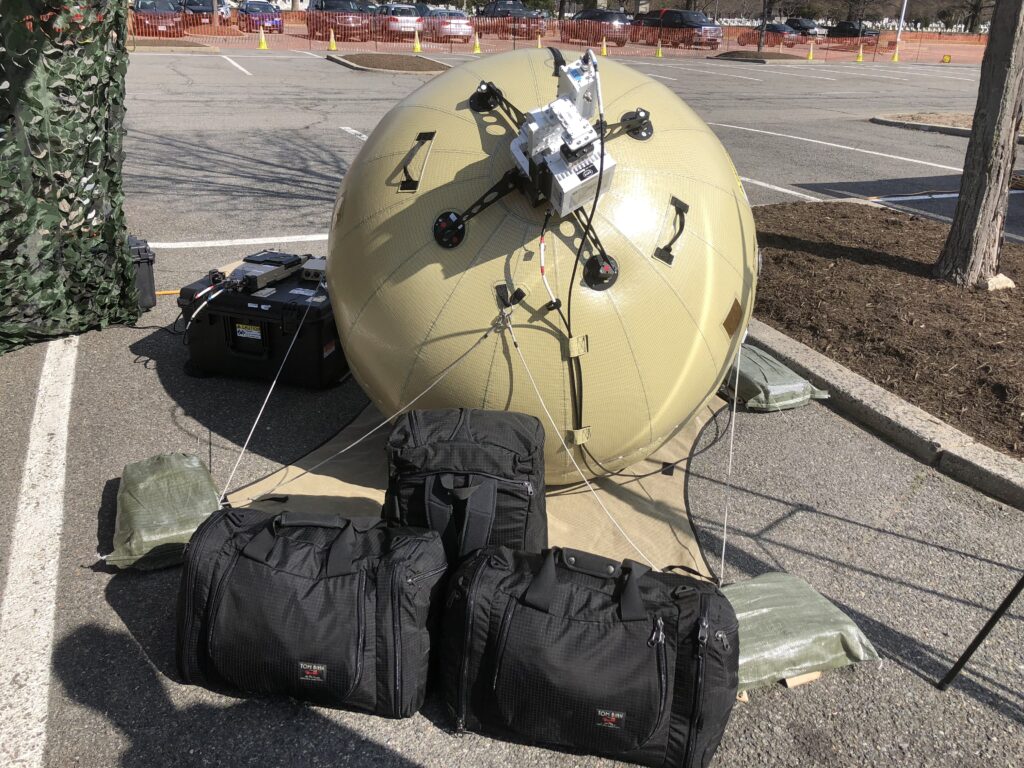THERESA HITCHENS

SATELLITE 2021: The Army hopes to kick off a pilot program next year for buying satellite communications services provided by commercial firms in the same way that civilians subscribe to a mobile phone plan.
The service is “shooting for” issuance of a request for proposals to industry to launch the pilot program early in 2022, Col. Shane Taylor, told Breaking Defense today at the SATELLITE 2021 conference in Maryland.
Taylor works for the Program Executive Office (PEO) Command, Control, & Communications – Tactical (C3T) headed by Brig. Gen. Rob Collins, which is responsible for the “SATCOM as a Managed Service (SaaMS)” program.
Eventually, the Army could buy services from industry that “include everything from a piece of hardware to the operations center to the bandwidth,” Collins told a panel on military uses of commercial SATCOM networks.
Commercial SATCOM providers have long urged DoD and the services to move from buying bandwidth in fits and starts to contracts that resemble a civilian’s average mobile phone or cable TV/Internet plan. Major SATCOM providers — such as Hughes (a subsidiary of SATCOM giant Echostar), Viasat, Intelsat, Inmarsat, SES and Eutelsat — argue that this would not only ease problems with service gaps that have long plagued troops in the field, but also be cheaper and allow speedier integration of new technology.
“I think, from a government perspective (a managed service model) would be so much more efficient. They could control the budget, … the acquisition time would narrow, and I just think they would get a lot more capability,” David Micha, president of Intelsat General Communications, told the panel. “They could use a leasing model for terminals, as we’ve talked about, they could buy terminals — but they don’t have to be in the business of doing each of these things individually.”
The question of terminals is a key one for the Army, since soldiers in the field have such diverse communications needs but at the same time, want equipment — from handheld radios to truck mounted antennas — that are simple to use and/or set up.
“One of our big goals is to get that complexity off the soldier at the edge,” Taylor said.
The PEO C3T, via the Defense Information Systems Agency (DISA), issued a request for information (RFI), provided to Breaking Defense, asking interested companies to demonstrate their services capabilities on June 25, with responses due on July 9. Taylor said his calendar for demonstrations if already filling up through the end of the year.
The results of those industry-funded demonstrations will then feed into requirements for the pilot program — and just as importantly, the budget, he said.
“In the past, really, requirements kind of shaped the technology and solutions we drove. We’re trying to use these opportunities from a technology solutions perspective to drive the requirements,” he said.
The demonstrations are designed to help the Army understand what’s available on the marketplace — “the business case approach,” as Taylor put it, as well as “what the ConOps would be and how we would integrate it into the existing architecture” and what exactly the service thinks it can afford in future.
Industry sources say there has been no little confusion about the Army’s plans for buying SATCOM services.
Indeed, Army plans actually have shifted from last October when it put out an initial RFI for SATCOM as a service linked directly to the provision of terminals for its Sustainment Tactical Network (STN) for logistics operations, Taylor explained. That RFI, he said, led to a rethink of the potential for service agreements with commercial vendors to fill the Army’s SATCOM needs, resulting in a widening of the program’s scope.
“As we progressed through this, I’ve actually kind of pulled it up to my level at the Tactical Network level because I think it’s got a better use case at the entire … ITN (Integrated Tactical Network) level and not just as a solution set for just the sustainment network,” he said.
The current demonstrations, according to the July RFI, can cover the following components of a “leased end-to-end global network via satellites, including:
Low-cost user terminal with Transit Case for shipping/storage
Guaranteed Network Throughput
Per terminal and/or group plan
Commercial-owned Gateways
Transport from Commercial-owned Gateways to Unified Transport Network using provider terrestrial network
User Training and Terminal Repair included
Network Operations Center (NOC) and Field Service Representative (FSR) support.
No comments:
Post a Comment